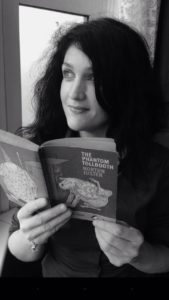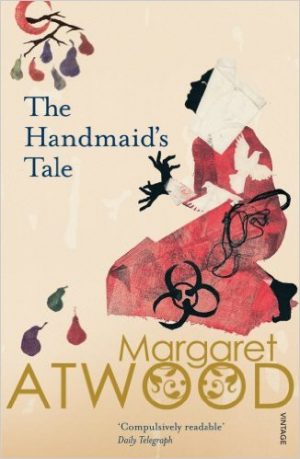I devoured Margaret Atwood’s The Blind Assassin and Alias Grace when they came out quite a few years ago, but somehow missed The Handmaid’s Tale. That was a mistake. Atwood’s dystopian, futuristic story about a totalitarian regime where women’s bodies are political currency has become a modern classic since it was published in 1985. Even more relevant now with religious and political extremism on the rise, The Handmaid’s Tale is about to come out as a TV-series. I suggest reading it first. It’s creepy, it’s dark and it’s a page-turner that will keep you reading long into the night.
We are in New England, renamed Gilead, sometime in the not too distant future. Christian fundamentalists have taken over. All women have been fired from their jobs and classified as Martha’s (house slaves), Wives (wives of the rulers, the Commanders), Aunts (brainwashers hired by the regime) or, as our narrator Offred, Handmaidens (breeding ‘machines’).
Offred, (Of-Fred, the possession of Fred of her Commander) used to have a normal life, a normal name, a husband she loved and a five-year old daughter. She now lives with the Commander and his wife as a prisoner, with the sole purpose of carrying the Commander’s child. Pollution and nuclear disasters have rendered most women infertile. A functioning womb is a sought after thing.
Atwood’s Gilead is utterly terrifying, in a medieval sort of way. There are lynching, torture and public executions, usually by hanging. Women are forced to wear cloaks and hoods, colour coded according to their roles. There’s mandatory praying. All books and magazines have been burnt. Spies are everywhere, ready to report anyone to the authorities. Rebelling would constitute suicide. Most significant of all, we’re firmly back to the Dark Ages when it comes to attitudes to women.
Gilead’s use of reproduction and women’s’ bodies as political tools is, of course, the main theme of Atwood’s book. But the pre-regime society wasn’t perfect either, a highly sexualised society, on the opposite side of the spectrum.
Atwood wants us to reflect on feminism, on the progress made (although we are by now means there yet, Atwood says) and how quickly it can be reversed. The same goes for democracy. The parallels to what goes on in the so-called Islamic Sate are eerie. And, many would argue, to some of Donald Trump’s policies. Sales of The Handmaid’s Tale have spiked since Trump’s election.
This book is page-turner, a nail bitingly good read until the very last page. In the right hands, it should make a riveting film. Judging by the early reviews of Hulu’s series, it seems like they’ve succeeded. I, for one, can’t wait to see it.
The Handmaid’s Tale is published by Vintage Books, 324 pages.
Margaret Atwood: The Handmaid’s Tale sales boosted by fear of Trump





